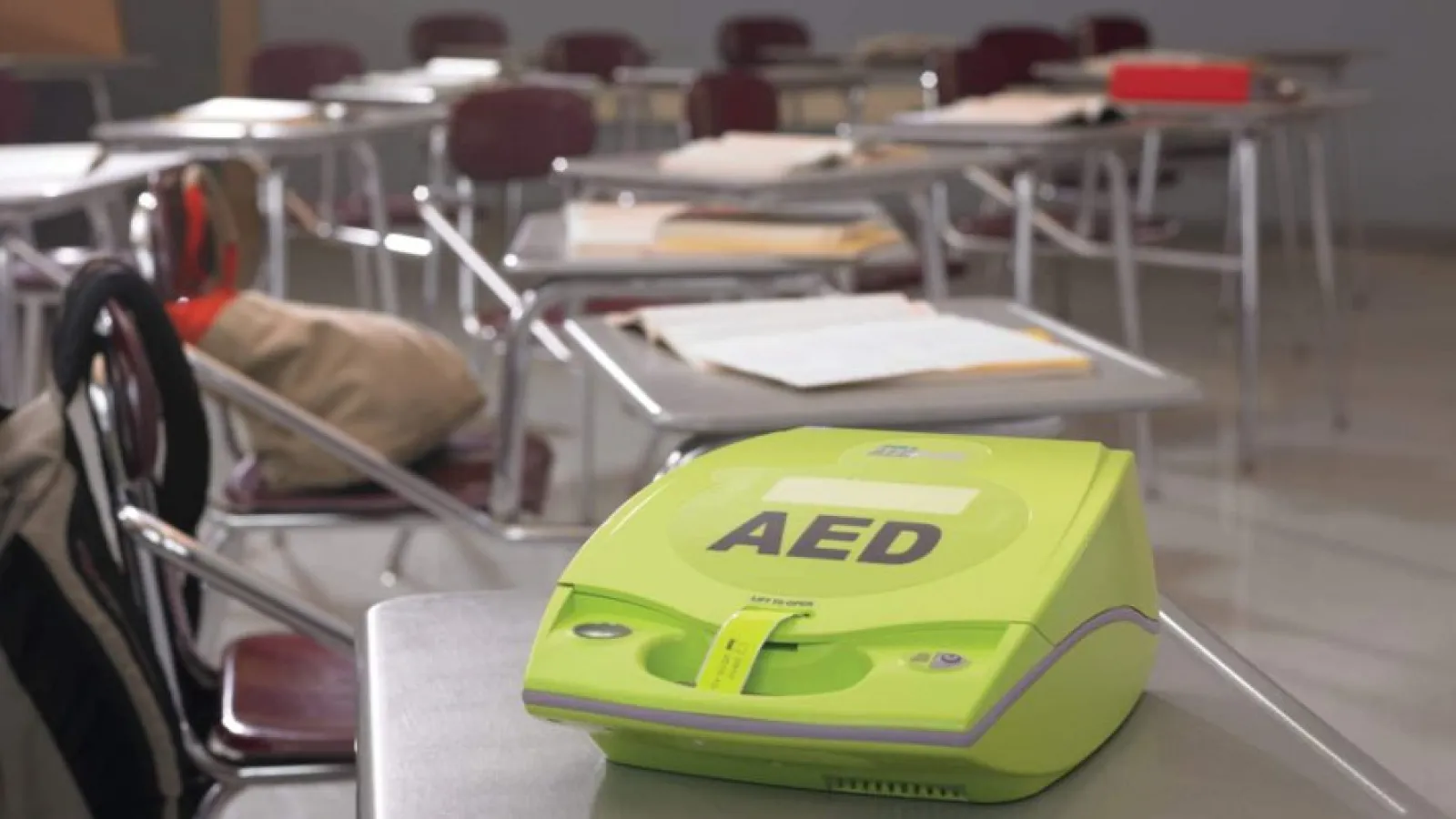
The Top AED Devices for Schools in 2024
Get A Quote Today
What Are the Best AED Machines for Schools and Universities?
Sudden Cardiac Arrest (SCA) incidents are increasingly highlighted in the news, prompting parents to inquire about their school's AED program. Many school systems have invested in ensuring their institutions are equipped and trained to handle SCA emergencies. Most states now have laws requiring AEDs on campus.
At AED Safety, we collaborate with schools and universities nationwide daily. With over 15 years of experience helping schools find the right AED, we'll share some recommendations in this blog.
The Importance of Having an AED in a School Setting
Having an AED in a school setting can save lives in the event of a cardiac emergency. SCA can occur at any time and is a leading cause of death, especially in individuals with underlying heart conditions. When SCA occurs, the heart suddenly stops functioning, and without prompt treatment, death can occur within minutes.
An AED is a portable device that delivers an electric shock to the heart to try to restore a normal rhythm. Modern AEDs are designed for use by laypeople with little or no medical training, providing clear audio and visual instructions to guide the user through the process.
How Often Should an AED Be Inspected and Maintained?
AEDs should be inspected at least once a month and maintained according to the manufacturer's guidelines. This includes checking the battery, pads, and other components for expiration or damage. Ensuring the AED is properly working and that the rescue kit is fully stocked is crucial.
Who Should Be Trained to Use an AED in a School Setting?
It is recommended that all school staff, including teachers, administrators, coaches, and custodial staff, be trained in using an AED. Students should also receive AED training as part of their health education curriculum.
Are There Any Special Regulations or Requirements for AEDs in Schools?
Each state has its own regulations and requirements for AEDs in schools. It is important to check with your state's health department or other relevant agencies to ensure compliance with local laws or regulations.
How Many AEDs Should Be in a School?
The number of AEDs needed in a school depends on factors like total square footage, student population, number of floors, and the presence of a gym or exercise room. Use our AED Calculator Tool to estimate the number of devices your school should have.
Choosing the Right AED Defibrillator for Schools
When selecting an AED for your school, consider these key features:
- Pediatric Capabilities: Essential for younger students, some AEDs come with separate pediatric pads, while others have a switch for pediatric settings. This is crucial for children under 8 years old and weighing less than 55 pounds.
- Bilingual Ability: In emergencies, having AEDs with dual-language capabilities can be invaluable, providing clear instructions in multiple languages.
- Ease of Use: Even with trained faculty, anyone may need to use the AED in an emergency. Look for devices that are user-friendly for those with minimal training.
- Reliability: Stick with FDA-approved manufacturers like Philips, HeartSine, Physio-Control, Defibtech, ZOLL, and Cardiac Science. Ensure the AED comes with an extended warranty, performs self-tests, and includes functioning batteries and electrodes.
Top AED Recommendations for Schools
ZOLL AED 3
The ZOLL AED 3 offers a combination of design, dependability, durability, and performance. Its color touchscreen LCD display makes it easy to use in emergencies. The device features Real CPR Help® for real-time feedback on CPR quality, increasing survival chances. It is WiFi-enabled for easy program management and remote monitoring through the Defibrillator Dashboard™. The AED 3 ensures it is always up to date with the latest guidelines, making it a reliable and user-friendly option for schools.
LIFEPAK CR2
The LIFEPAK CR2 is versatile and easy to use, available in both semi-automatic and fully-automatic options. It supports single or dual-language use, making it accessible to a wider range of users. With WiFi and USB connectivity, the device allows for easy data transfer and remote monitoring. Its durability and reliability make it a great option for schools needing an AED on site.
Philips FRX
Weighing only 3.5 lbs, the Philips FRx is easy to carry and transport, ideal for schools. It comes with an 8-year warranty, ensuring availability during emergencies. The semi-rigid carry case offers protection and easy transport. The device features Quick Shock capabilities for rapid defibrillation and CPR coaching, increasing survival chances. The "On Demand" iButton provides step-by-step rescue guidance, making it easy for non-medical personnel to use.
Frequently Asked Questions (FAQs)
What is the difference between semi-automatic and fully-automatic AEDs?
- Semi-automatic AEDs: These devices require the user to press a button to deliver the shock after the device has analyzed the heart rhythm and determined that a shock is necessary. This allows the responder a moment to ensure everyone is clear of the victim before administering the shock.
- Fully-automatic AEDs: These devices automatically deliver a shock without the need for the user to press a button, once the device has analyzed the heart rhythm and deemed a shock necessary. This can be beneficial in high-stress situations where every second counts.
Can AEDs be used on children, and do they require special pads?
What should I do if an AED battery or pads are expired?
Is training required to use an AED, and how can my school get trained?
Are AEDs required by law in schools, and what are the legal implications?
We did not find your search. Please try another entry.
